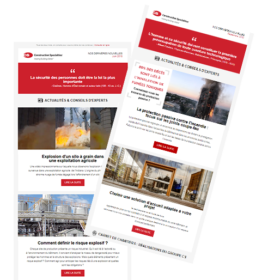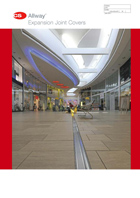 Answering some of the common questions we get asked regarding expansion joint covers, starting with the basics we will explain exactly what an expansion joint cover is, running through what it does and how it does it. So lets get started…
Answering some of the common questions we get asked regarding expansion joint covers, starting with the basics we will explain exactly what an expansion joint cover is, running through what it does and how it does it. So lets get started…
First things first, shattering a few misconceptions:
1. “Movement Joints and Expansion Joints are different”
– WRONG, they are the same, in fact they are different terms for the same thing.
2. “Expansion Joints and Expansion Joint Covers are the same”
– WRONG, they are different, see below for more info.
3. “Expansion Joints are just for floors”
– WRONG, they run throughout a building which includes ceilings, walls and of course floors.
4. “Expansion Joint Covers are ugly”
– ONLY IF not specified correctly, these days joint covers can incorporate many types of floor finishes (even marble) and can be hidden very effectively.
Now that’s out of the way, on to the burning question… What is an Expansion Joint Cover?
To understand what an Expansion Joint Cover is, I will first explain what an Expansion or Movement Joint is.
What is an Expansion Joint and why do I need it?
An Expansion Joint (or Movement Joint, MJ on structural drawings) is a structural gap designed to accommodate the movement of a building in a controlled manner, preventing damage to the internal and external finishes of a building. Expansion joints run right through the structure of the building, from top to bottom and front to back, and often become wider as you go higher up the building. Without an Expansion Joint the building movement will cause damage to the building often making it unsafe.
So what is an Expansion Joint Cover?
An Expansion Joint Cover, or EJC for short, provides a covered transition across the Expansion Joint opening, remaining unaffected by the relative movement of the two surfaces either side of the joint. Check out the video below to see one in action:
It effectively allows the building to move in a safe and controlled manner without leaving a tripping hazard from the exposed Expansion Joint.
What types of movement can you expect within a building?
 An EJC has to cope with 4 main types of building movement and has to move in all directions:
An EJC has to cope with 4 main types of building movement and has to move in all directions:
1. Thermal Expansion or Contraction = Movement caused by the structure expanding and contracting with temperature changes, or shrinking as it dries out.
2. Building Settlement =Movement caused by the dead and live loads of the structure on the supporting foundations.
3. Wind Sway = Movement caused by the effect of strong winds on the structure, which is more pronounced on tall buildings
4. Seismic Activity = Multi-directional movement caused by seismic events, can be significant depending on the magnitude of the seismic activity.
Where are EJC’s used? Does my building have them?
EJC’s are used in all large plan buildings, but each building will have its own performance requirements for the joint cover. For example a hospital will require a flush floor finish to allow for wheeled traffic such as wheelchairs and gurneys, as well as a close rubber seal to ensure infection control is maintained. This is different to the requirements of say a shopping centre or airport which will need a strong, hardwearing, tamperproof joint that will usually be all metal.
How do I maintain fire integrity with an EJC installed?
Fire barriers are available for the majority of Expansion Joint Covers, usually with a 1 or 2 hour fire rating but 3 or 4 hour barriers are available. These are installed before the EJC filling the Expansion Joint and then the Expansion Joint Cover is installed over the top.
Are all Expansion Joint Covers Waterproof?
No, but the majority of them can incorporate separate moisture barriers. Some systems like the PDA Series from Construction Specialties are naturally 100% waterproof, and can actually tie into the deck waterproofing system with its wing seals.

